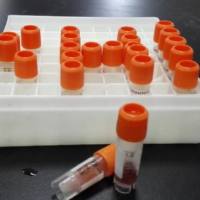Multicolor FISH
互联网
1020
Chromosome “painting” by fluorescent labeled probes for each human chromosome has been available since the late 1980s. The DNA or RNA radioactive isotopes have been in use since 1969 as nucleic acid probes (1 ,2 ). The introduction of fluorescent labeled probes by Bauman et al. (1980) presented an attractive alternative for chromosomal in situ hybridization (3 ). Based on unique DNA sequences specific to individual chromosomes, painting probes were generated for each human chromosome (4 ,5 ). Pinkel et al. (1988) used in situ hybridization of 120 fluorescent DNA probes (FISH) along the entire length of chromosome 4 to generate a specific painting probe for this chromosome (6 ). By the early 1990s, whole chromosome painting probes (wcp) were commercially available for each human chromosome in two colors (green and orange). Jalal et al. presented the characteristics of the direct labeled wcps for every chromosome and their utility in clinical practice (7 ). The ability to resolve chromosomal anomalies was greatly enhanced when wcps became available as a complement to chromosome analysis by banding techniques.








